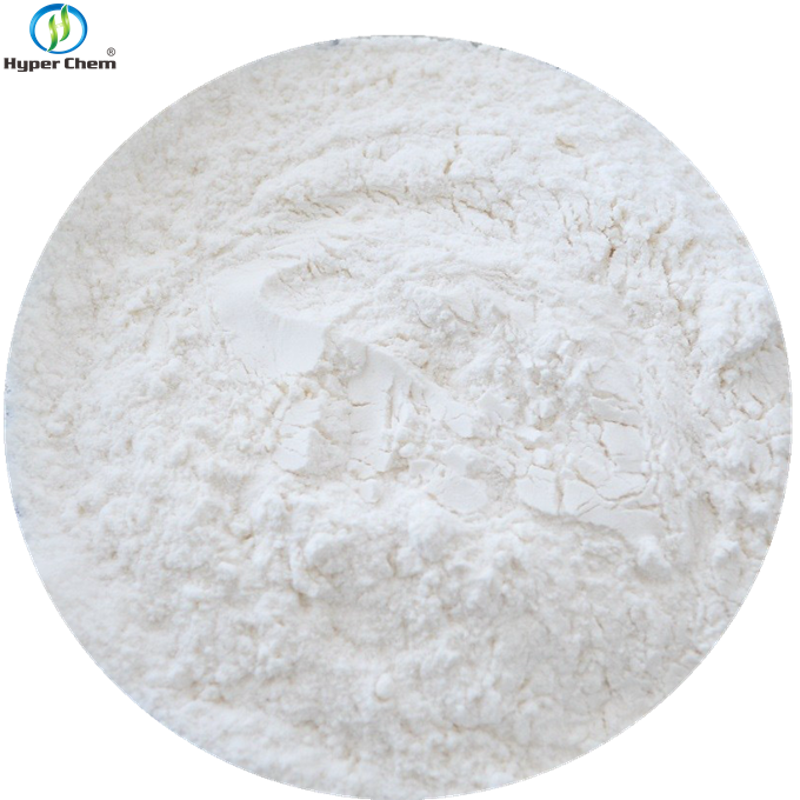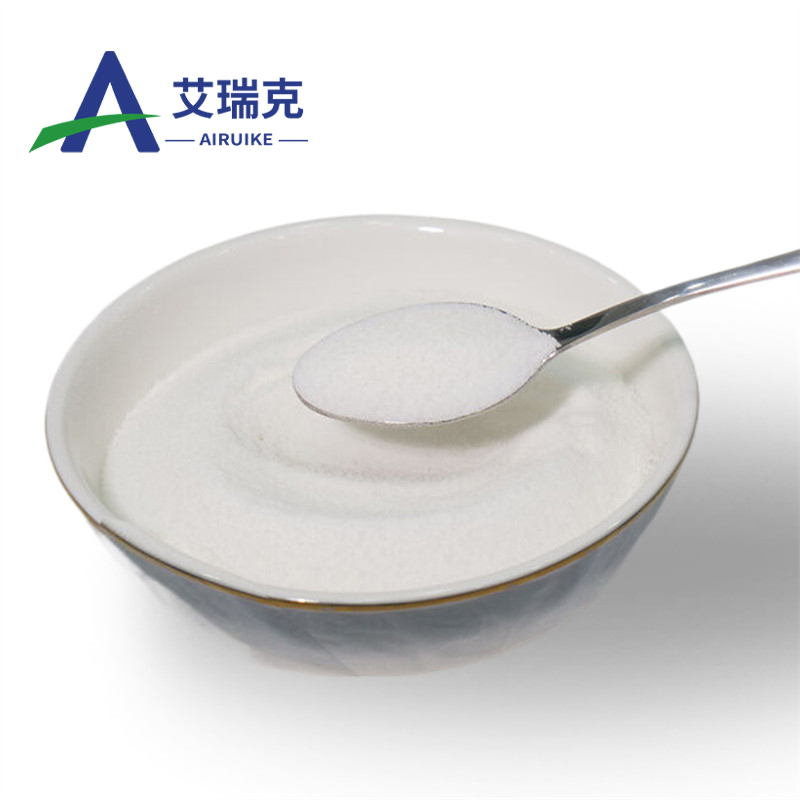-
Categories
-
Pharmaceutical Intermediates
-
Active Pharmaceutical Ingredients
-
Food Additives
- Industrial Coatings
- Agrochemicals
- Dyes and Pigments
- Surfactant
- Flavors and Fragrances
- Chemical Reagents
- Catalyst and Auxiliary
- Natural Products
- Inorganic Chemistry
-
Organic Chemistry
-
Biochemical Engineering
- Analytical Chemistry
-
Cosmetic Ingredient
- Water Treatment Chemical
-
Pharmaceutical Intermediates
Promotion
ECHEMI Mall
Wholesale
Weekly Price
Exhibition
News
-
Trade Service
Written by - responsible editor - ,Wang Sizhen, Fang Yiyi Editor—Summer Leaf
Ischemia-reperfusion (I/R) injury is a common cause of irreversible visual impairment in clinical practice and is involved in glaucoma, retinal artery occlusion, and diabetic retinopathy [1-3] and other pathological processes
of various eye diseases.
Through free radical damage, oxidative stress, mitochondrial dysfunction, inflammatory cascade, and cysteine-aspartate protease (caspase) activation, it causes retinal structural changes, retinal ganglion cells (RGC).
death, eventually leading to loss of retinal function [4].
Due to the complexity of its specific mechanism, there is currently no thorough and effective treatment in clinical practice, and symptomatic treatment such as local administration or surgical treatment is still the mainstay
.
Therefore, it is particularly important
to further explore the damage mechanism of retinal ischemia-reperfusion and to study alternative therapies with a greater safety range.
Iron optosis is a novel type of non-apoptotic cell death characterized by intracellular iron overload and accumulation of lipid peroxides to lethal levels[5].
Studies have shown that pathological high intraocular pressure can induce iron death
in RGC in patients with glaucoma.
However, the association between ferreosis and retinal cell subsets remains to be studied
.
Professor Zhuo Yehong's team at Zhongshan Ophthalmology Center of Sun Yat-sen University has long been committed to the immunological mechanism of glaucoma and the repair of optic nerve damage, and his series of research results have greatly promoted the progress
of clinical transformation of glaucoma.
Based on the systematic research results in the field of neuroimmunology and single cells, on October 26, 2022, Professor Zhuo Yehong and Professor Su Wenru of Zhongshan Ophthalmology Center of Sun Yat-sen University collaborated to carry out research as co-corresponding authors in the Journal of Published in the journal Neuroinflammation (IF:9.
587) titled "Single-cell RNA sequencing reveals a landscape and targeted treatment of ferroptosis in retinal ischemia/reperfusion injury
".
For the first time, the researchers constructed a single-cell atlas of retinal ischemia-reperfusion injury in mice, suggesting that targeted inhibition of iron death can effectively protect retinal structure and function
.
These results reveal that the signaling pathways specific to iron death are expected to be potential therapeutic targets for neuroinflammatory diseases, especially glaucoma
.
In this work, the researchers painted a comprehensive retinal single-cell atlas that revealed changes in the number of retinal cell subsets and gene expression after I/R injury in mice (Figure 1).
Single-cell data suggest that most retinal cells: rod cells (RODs), cones (CONE), rod bipolar cells (RODs), cone bipolar cells ( CBC), aglycocytosis (AC), horizontal cells (HC), retinal ganglion cells (RGC), macroglia (MAG).
) and vascular endothelial cells (VEC) are significantly reduced
.
Various types of immune cells: myeloid cells (MNEU), T cells, and dendritic cells (T&DC) were significantly increased
.
In particular, there are a large number of bloodborne immune cells (monocytes, neutrophils, T&DCs) along with the blood-ocular barrier The damage infiltrates into the retinal tissue
.
This evidence suggests that MNEU may be an important target cell
in retinal ischemia-reperfusion injury.
Fig.
1 scRNA-seq revealed the heterogeneity of
mouse retinal cells after I/R injury.
The researchers performed single-cell RNA sequencing analysis on mice on the third day after I/R injury, and found that compared with blank mice, the nerve cells in the retina of mice in the I/R group were significantly reduced.
Immune cells are significantly increased
.
Subsequently, the researchers performed an I/R-related DEG analysis, showing that genes related to iron metabolism and iron death were highly expressed
in almost all retinal cell types in the model group.
(Source: Li et al.
, J Neuroinflammation.
, 2022).
At the same time, the expression of ironoptosis-related genes is upregulated
in photoreceptors, RGCs, and glial cells.
According to differentially expressed genes (DEGs), the researchers clustered cone cells into four subpopulations of SC0-SC3, in which SC3 is highly expressed in pro-inflammatory factors (Ilβ, Il1a) and iron metabolism-related genes (Fth1, Flt1 and Hmox1); Similarly, rods are subclustered as SC0-SC3, and inflammation (S100a8 and Il1b) and iron metabolism (Fth1, are involved).
Flt1 and Hmox1) genes are enriched in SC2; RGC is subdivided into SC0 and SC1 groups, S100a8, S100a9, Cxcl2, Il1b, Flt1, and Hmox1 are highly expressed in SC0
。 In 7 subpopulations of macroglia, SC1, SC2, SC3 and I/R mice SC5 levels were higher, while blank mice had larger
proportions of SC0, SC4, and SC6.
SC3 is particularly prominent
in the I/R group.
Further examination reveals acute inflammation (Saa3, S100a8, S100a9, and Cxcl2) associated with ferrodicity (Fth1 , Ftl1 and Hmox1) genes are significantly upregulated
.
The four subsets of myeloid cells were almost all increased
in the I/R group.
Unlike other existing studies, the researchers found that iron death
occurs in almost all types of retinal cells during I/R injury.
After administration of the iron death inhibitor Fer-1, I/R-induced RGC death can be significantly inhibited (Figure 2).
, IBA-1 positive cell activation and inflammatory response
.
Subsequently, the researchers conducted in vivo and in vitro verification and found that the iron death inhibitor Fer-1 can significantly reduce RGC mortality, inhibit IBA-1-positive cell activation, and reduce inflammation, thereby improving it I/R-induced impairment
of retinal structure and function.
Figure 2 Inhibition of iron death reduces I/R-induced RGC death and retinal damage
.
After intravitreal injection of Fer-1, the researchers found that inhibition of iron death could significantly improve the survival rate of RGC and increase the thickness
of the retinal IPL layer.
(Source: Li et al.
, J Neuroinflammation.
, 2022).
In summary, this work reported the retinal cell mapping of mice after ischemia-reperfusion (I/R) injury from the single-cell level, explored the interaction mechanisms of different types of retinal cells, and predicted the important role of iron death in retinal I/R injury.
It has been verified that iron death inhibitors can reduce RGC death and reduce neuroinflammatory response, thereby protecting the structure and function of
the retina.
However, the exact mechanism of iron death has not been elucidated, and most existing iron death inhibitors are non-specific, making clinical drug research limited
.
At the same time, this may also be a new direction for
future research.
Original link: https://doi.
org/10.
1186/s12974-022-02621-9
Professor Zhuo Yehong and Professor Su Wenru of Zhongshan Ophthalmology Center of Sun Yat-sen University are the co-corresponding authors
.
Li Yangyang, doctoral student of Zhongshan Eye Center, Sun Yat-sen University, Wen Yuwen, master student, Liu Xiuxing and Li Zhuang, doctoral students, are the co-first authors
.
Sun Yat-sen University Zhongshan Ophthalmology Center, State Key Laboratory of Ophthalmology, Guangdong Provincial Key Laboratory of Ophthalmology and Visual Science are the first
.
The project was supported
by the National Natural Science Foundation of China.
Corresponding author: Zhuo Yehong (left), Su Wenru (right)
(Photo courtesy of: Zhuo Yehong/Su Wenru team, Zhongshan Eye Center, Sun Yat-sen University)
Zhuo Yehong, professor of ophthalmology, chief physician, doctoral supervisor, "Pearl River Scholar" distinguished professor
.
Mainly engaged in the prevention and treatment of
glaucoma and myopia.
In particular, he has rich clinical experience
in the early clinical diagnosis of glaucoma, the diagnosis and treatment of refractory glaucoma, and the combined surgical treatment of cataract glaucoma.
He has presided over 1 project of the National Key R&D Program, 7 projects of the National Natural Science Foundation of China, and 1 major basic research cultivation project of
the Natural Science Foundation of Guangdong Province.
Published 58 SCI papers as the first or corresponding author, of which Cell Death Differ(IF=15.
820)1 Biomaterials(IF=14.
58)1, Molecular Therapy (IF=11.
454)1 3 articles
on PNAS (IF=11.
200).
Su Wenru, chief physician, doctoral supervisor
.
Winner of "National Excellent Youth" Fund and winner of "Guangdong Province Jieqing" Fund, clinically good at the diagnosis and treatment
of various ocular immune diseases and fundus diseases such as uveitis.
At present, his main research direction is basic and clinical research of ophthalmic immunoinflammatory diseases, and he has published 91 SCI papers and 68 communication and first-author papers, including 10 IF> papers 15 papers, 2 IF> 20 papers, including Nature communications, PNAS, Cell reports medicine, Cell Discovery, etc
.
He won 1 first prize of Guangdong Province Science and Technology Progress Award and 3 authorized invention patents
.
Welcome to scan the code to join the logical neuroscience literature learning 3
Group remarks format: name--research field-degree/title/title/position
[1] Cell Metab Review—Cao Xu's team reviews the regulation of osteohomeostasis and bone pain by the intraosseous sensory system
[2] NAN-Yuan Linhong's research group revealed that DHA intervention had different effects on brain lipid levels, fatty acid transporter expression and Aβ metabolism in ApoE-/- and C57 WT mice
[3] Autophagy Review—Xiaojiang Li's team reviews the differences and research progress of mitochondrial autophagy in vivo and in vitro models
[4] HBM-Shang Huifang's research group revealed the markers of motor progress of Parkinson's disease through functional imaging technology
[5] Cell Rep—Song Jianren's research group reveals a new law of spinal cord circuit reconstruction after spinal cord injury
[6] HBM-Song Yan/Sun Li's research group revealed the cognitive neural base of implicit visuospatial coding disorder in children with ADHD based on machine learning technology
[7] Nat Neurosci – Breakthrough! Li Bo's research group at Cold Spring Harbor Laboratory revealed the neural mechanism of pan-amygdala structure regulating diet choice and energy metabolism
[8] Nat Commun-Xing Dajun's research group revealed a new mechanism for micro-eye-saccade direction-specific modulation of visual information coding
[9] Sci Adv—Reinterprets the brain's processing of reward information
[10] Brain Stimu—Rong Peijing's research group suggests that percutaneous ear stimulation improves cognitive function in patients with mild cognitive dysfunction
Recommended high-quality scientific research training courses[1] Symposium on single-cell sequencing and spatial transcriptomics data analysis (November 5-6, Tencent Online Conference)[2] The 9th EEG Data Analysis Launch Flight (Training Camp: 2022.11.
23-12.
24)
Welcome to join "Logical Neuroscience" 【1】" Logical Neuroscience "Recruitment for editor/operation positions ( online office) [2] Talent recruitment - " Logical Neuroscience " Recruitment for article interpretation/writing positions ( Internet part-time, online office) References (slide up and down to read)
1.
Goldblum, D.
& Mittag, T.
Prospects for relevant glaucoma models with retinal ganglion cell damage in the rodent eye.
Vision Res 42, 471-478 (2002).
2.
Mitchell, P.
, Liew, G.
, Gopinath, B.
& Wong, T.
Y.
Age-related macular degeneration.
Lancet 392, 1147-1159 (2018).
3.
Osborne, N.
N.
et al.
Retinal ischemia: mechanisms of damage and potential therapeutic strategies.
Progress in retinal and eye research 23, 91-147 (2004).
4.
Kim, B.
J.
, Braun, T.
A.
, Wordinger, R.
J.
& Clark, A.
F.
Progressive morphological changes and impaired retinal function associated with temporal regulation of gene expression after retinal ischemia/reperfusion injury in mice.
Molecular neurodegeneration 8, 21 (2013).
5.
Dixon, S.
J.
et al.
Ferroptosis: an iron-dependent form of nonapoptotic cell death.
Cell 149, 1060-1072 (2012).
End of this article







